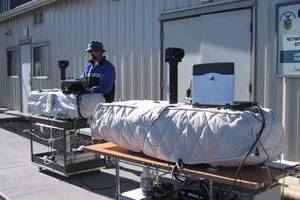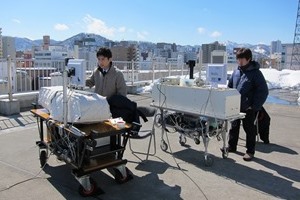Dobson Spectrophotometers
Instrument overview
The Japan Meteorological Agency (JMA) conducted ozone observation using a Dobson spectrophotometer at Kagoshima until March 2005 and at Tsukuba, Sapporo and Naha until January 2018. JMA currently implements such observation using Dobson spectrophotometer only at Syowa in Antarctica.
Roles for maintaining accuracy in Asia
World/Regional Dobson Calibration Centres (WDCC/RDCCs) operate under the framework of the Global Atmosphere Watch (GAW) programme of the World Meteorological Organization (WMO).
The RDCC for Asia is operated by the Japan Meteorological Agency (JMA), which maintains and manages regional standard instrument #116 for Dobson spectrophotometers in Asia.
Calibration based on intercomparison with the world standard instrument
WMO has designated Dobson spectrophotometer #83 as the world standard instrument. The unit is operated by the Climate Monitoring and Diagnostics Laboratory (CMDL) of the National Oceanic and Atmospheric Administration (NOAA), and is calibrated at the CMDL Mauna Loa Observatory in Hawaii using the Langley method. Regional standard instruments are then calibrated based on intercomparison with the world standard. Calibration constants for Dobson spectrophotometers are determined in such a hierarchical manner.
The Aerological Observatory maintains regional standard instrument #116, whose calibration is based on intercomparison with the world standard every three years to ensure high accuracy in observation data for Asia's ozone observation network.

Intercomparison with the world standard instrument at Mauna Loa, Hawaii
Left: world standard Dobson #83; right: regional standard Dobson #116
Calibration Based on Regional Standard Instrument Comparison
The accuracy of Dobson spectrophotometers at Syowa is maintained via regular intercomparison with the regional standard instrument.

Intercomparison with the regional standard instrument